 TRENT'S WALK IN BELIZEAN JUNGLE (Part Sixteen) Is brought to you by Grand Belizean Estates, the next place to call home. 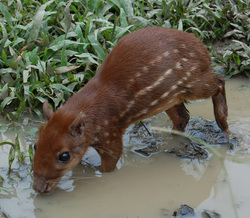 Agouti AGOUTI PACA GIBNUT SIGHTING The paca is known officially known as Agouti paca; in Belize it is unofficially called gibnut, and also known as "the royal rat". Ever since the British press got ahold of the fact, that this delicacy was served to the Queen of England when she visited. The Gibut is from the rodent family; as is the rabbit, which is also a popular food source is all of Europe. Although they occupy the same environment - low to middling elevation of delicious or rain forest throughout Central America and beyond, both north and south - their lives do not often cross. Agoutis are diurnal (daytime) creatures while pacas are most decidedly nocturnal. The latter wears a handsome brown coat with horizontal rows of creamy spots down the sides which makes it prized by leather craftsman. The agouti, is a girzzled fur several sizes smaller, has longish hair on its rump which it can stand up on end to fool a pursuing enemy into thinking that there is more to agouitis than meets the first impression. Nature has provided the paca with a protective trick, whereny itides over a thick connective tissue, making it very difficult to grasp. It also has expandable cheekbones which not only increase the skull mass but also make an interior sounding box to amplify vocal threats or to resonate the ominous sound of grinding teeth. Pascas confront each other head to head, slashing out with outsized incisors, but when approached by a predator they turn and run to the nearest body of water, where they can stay submerged for quite some time. If this source of refuge is unavailable - and and the paca is only a short distance runner - then it will leap away and "freeze" in its landing position, sometimes holding the pose for as long as 45 minutes. The agouti uses a different defense altogether, running around in circles and squealing - making it easy prey for any aggressor with a bit of sense. Both of these littel beasts are seed and fruit eaters, the agouti especially adept at cracking open the harest seed coats. It sits on its haunches as it eats, using its forepaws to rotate the food and at the same time keeping a watch-out for foe. It stores seeds in the ground for future reference, placing them in intermittent patterns to confuse the thieving peccary, and in so doing acts as an absentminded propagator of all sorts of plants. The less energetic paca stores food as fat. It prefers to eat in the darkest possible corner of the most sheltered spot available, perhaps dispersing a few seeds during the transporting from source to secret nook. Odor plays an important role in inter-agouti communication. They mark the trails, the eating spots and the sleeping quarters within their 2-3 hectare home ranges by dragging their perinea along the ground, leaving a glandular secretion. Pacas use this signature for purposes of aggression. Males of both species spray their brides to make their claim. The young are already quite mature at birth. In fact, the newborn agouti is taken by its mother to several suitable nesting sites - i.e. holes too small for coatis, tayras, and other enemies, but also for the mother - and, when the baby has made its selection, it goes about furnishing its nursery with twigs and leaves. The mother will come each morning and evening, calling the baby out to be cleaned and fed. At the Belize Zoo, you can find out who's who.
7 Comments
|
Trenton Turley
Hi, my name is Trenton S. Turley. I've been living in Belize now for 11 years. Hope you enjoy reading my many blog posts. I write about things, that are passionate to me.
SNAKES OF BELIZE!
Check out, my my current blog series on Snakes of Belize. Categories
All
Archives
April 2016
|
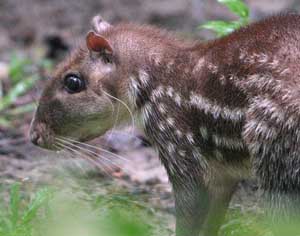
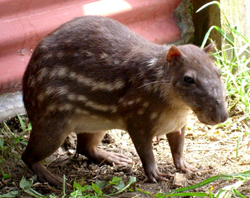
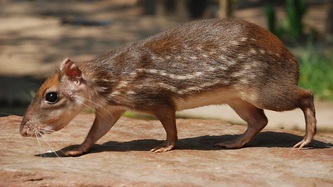
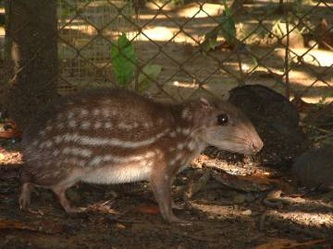
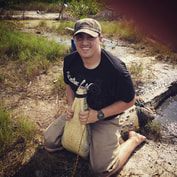
 RSS Feed
RSS Feed